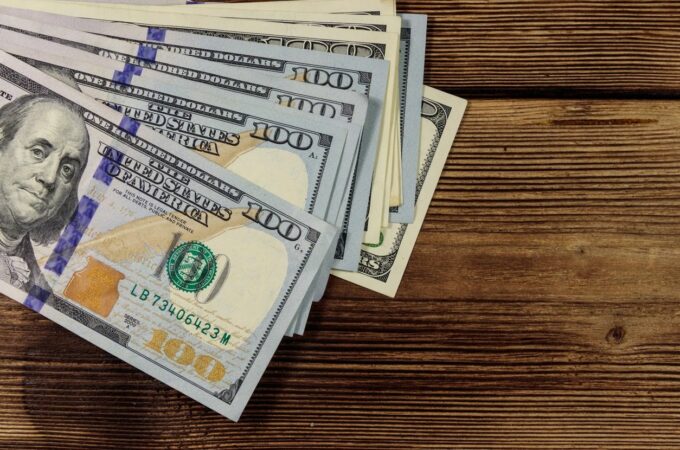
Preserving Cash is the Key to Your Business Surviving the COVID-19 Recession
We find ourselves in unprecedented times. Many small businesses have had to close their doors and furlough employees with no idea when they might be able to re-open. Unemployment claims have hit an all-time high and some are predicting that ![]() COVID-19 related job losses could reach 47 million. The United States economy is undoubtedly in a recession currently and a depression (which economists define as a decline in real GDP exceeding 10%) is a real possibility. It’s been more than a century since the world has dealt with a global pandemic. Nobody really knows for sure how long our current circumstances will last and what the world will look like when this is all over.
COVID-19 related job losses could reach 47 million. The United States economy is undoubtedly in a recession currently and a depression (which economists define as a decline in real GDP exceeding 10%) is a real possibility. It’s been more than a century since the world has dealt with a global pandemic. Nobody really knows for sure how long our current circumstances will last and what the world will look like when this is all over.
If you are a business owner, you are facing more challenges than most. Do I keep my doors open? If I do, what changes do I need to make to follow CDC guidelines? If I don’t keep my doors open, how am I going to pay my fixed operating expenses? What do I do about my employees, especially if I can’t use them right now? How long will social distancing guidelines be in place in my community? Will there still be a demand for my business if the economy slides into a deep depression? These are all good questions, but there are no cut and dried answers to any of them.
Your New Business Goal is Survival
As a business owner, the last thing you should do is step back and watch how things play out. At some point, you will run out of cash and have to shut down your business. Rather, you should take aggressive action to protect the long-term sustainability of your company. In December, I wrote a piece titled ![]() How MarketBeat is Preparing for the Next Recession and How You Can Prepare Your Business Too, which outlines a series of steps any business can take to prepare for an economic downturn. While the recession is now here, it’s not too late to reduce fixed costs, get caught up on your invoices and think about how your industry will be changing in the light of the recession. Your primary goal today should be to preserve cash. Reduce or eliminate every expense that isn’t critical. Sell some stuff if you need to. Look for unique and creative ways to serve your customers so that revenue continues to come in. The economy will start to come back at some point in the next year or two, you just need to simply survive until people start spending money again.
How MarketBeat is Preparing for the Next Recession and How You Can Prepare Your Business Too, which outlines a series of steps any business can take to prepare for an economic downturn. While the recession is now here, it’s not too late to reduce fixed costs, get caught up on your invoices and think about how your industry will be changing in the light of the recession. Your primary goal today should be to preserve cash. Reduce or eliminate every expense that isn’t critical. Sell some stuff if you need to. Look for unique and creative ways to serve your customers so that revenue continues to come in. The economy will start to come back at some point in the next year or two, you just need to simply survive until people start spending money again.
Leverage Federal Programs for Cashflow
Congress responded pretty aggressively to the economic impact of COVID-19 with the $2 Trillion CARES Act, which will effectively become the largest experiment in ![]() modern monetary theory in history. The two big opportunities for business owners are the Paycheck Protection Program (PPP) and Economic Injury Disaster Loans (EIDL). My suspicion is that the Paycheck Protection Program, which provides forgivable loans equivalent to 2.5 months of your company’s payroll, will be the biggest source of government relief for small businesses. The idea is that you can get a loan for 2.5 times your monthly payroll and benefits expenses, and then that loan will be forgiven if you use the money to cover payroll
modern monetary theory in history. The two big opportunities for business owners are the Paycheck Protection Program (PPP) and Economic Injury Disaster Loans (EIDL). My suspicion is that the Paycheck Protection Program, which provides forgivable loans equivalent to 2.5 months of your company’s payroll, will be the biggest source of government relief for small businesses. The idea is that you can get a loan for 2.5 times your monthly payroll and benefits expenses, and then that loan will be forgiven if you use the money to cover payroll
Emergency Economic Injury Grants (EEIG) are available from the SBA which amount to $10,000 in free business support from the government. Note that you have to use EEIG money to pay for different expenses than what is covered by PPP funds and that EEIG money may be deducted from the amount of loan forgiveness you can receive on a PPP loan. On top of an EEIG grant, you can get a low-interest loan from the SBA as part of the Economic Injury Disaster Loan program (EIDL). If you have an existing SBA loan, there is a Small Business Debt Relief program that will cover all loan payments (including principal, interest, and fees) for six months.
Some banks, including Wells Fargo, are ![]() capping the maximum dollar amount of PPP loans they will make. Wells Fargo, Bank of America and other big banks are flooded with PPP applications and realistically won’t be able to process them all. Your best bet may be to work with a local bank that is less likely to be flooded with applications to apply for a PPP loan. I applied for the PPP program on Friday through
capping the maximum dollar amount of PPP loans they will make. Wells Fargo, Bank of America and other big banks are flooded with PPP applications and realistically won’t be able to process them all. Your best bet may be to work with a local bank that is less likely to be flooded with applications to apply for a PPP loan. I applied for the PPP program on Friday through ![]() First Premier Bank in Sioux Falls and already had my SBA loan number by Monday at noon. The loan will likely close later in the week.
First Premier Bank in Sioux Falls and already had my SBA loan number by Monday at noon. The loan will likely close later in the week.
This ![]() PDF document from the SBA does a good job outlining the programs available through the SBA. You can also
PDF document from the SBA does a good job outlining the programs available through the SBA. You can also ![]() watch an interview that was conducted with South Dakota SBA District Director, Jaime Wood, through Downtown Rotary that has more information about the programs.
watch an interview that was conducted with South Dakota SBA District Director, Jaime Wood, through Downtown Rotary that has more information about the programs.
Additional Sources of Cash Flow
Many states are offering their own no-interest and low-interest loan programs. In South Dakota, you can get a business loan from the Governor’s Office of Economic Development (GOED) for up to $75,000.00. These loans are available at 0% interest with a maximum loan term of 60 months. There are no payments for the first 6 months on these loans.
If you happen to run a business in downtown Sioux Falls and are a member of DTSF, you can get a $1,000 financial aid grant that comes from the Downtown Economic Development Incentive Fund (DEDIF) which is capitalized by community banks and a grant from the Federal Government. The idea behind this program is to help small business owners with fixed costs until the federal aid program come online. If you are a DTSF member, check your email for more information about how to apply for this grant.
Develop a Weekly Cashflow Plan for the Next 10 Weeks
I cannot overstate how important managing cash is right now. Every Monday you should look at the revenue came in over the last seven days and the expenses that went out the last seven days. Does your revenue still exceed your expenses? If not, it’s time to make changes. You should also look forward and determine at what revenue and expenses you are looking at coming in week by week over the next several weeks. Roland Frasier, host of the Business Lunch podcast, has some good thoughts on developing a cashflow plan on an episode title “![]() What To Do To Survive And Thrive The Next 90 Days.”
What To Do To Survive And Thrive The Next 90 Days.”
Wrap-up
It’s time to be the boss and make some tough decisions. It’s time to make cuts where appropriate, shore up cash flow, leverage federal programs and monitor cash flow like a hawk. You can get through this recession (or depression?) and come out stronger on the other side, but the time to take action is now.
By Matthew Paulson
Recommended
-
Female Real Estate Investors P...July 18th, 2024
-
Home Maintenance Tips To Save ...July 3rd, 2024
-
Is Perfectionism Keeping You F...June 20th, 2024
-
FIVE MONTHS FROM TODAY ~ SAVE ...May 23rd, 2024
-
Being Formidable!May 20th, 2024
















